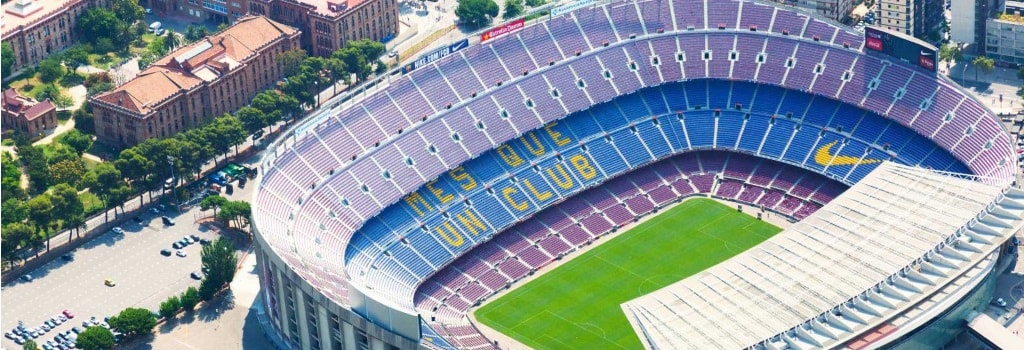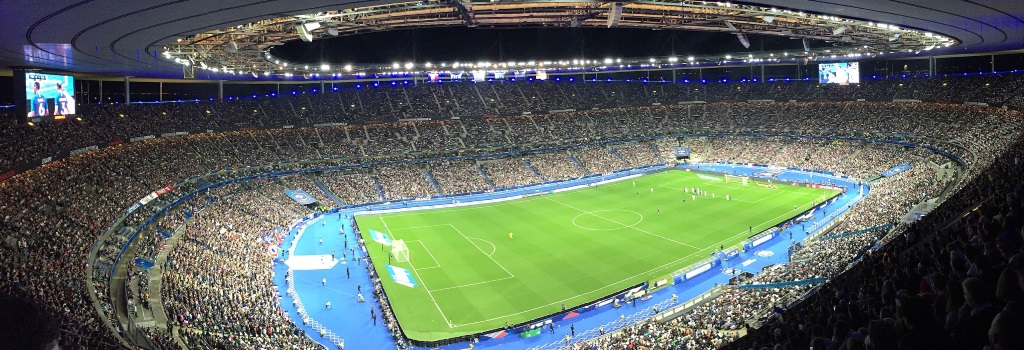

Ever wondered what the biggest stadiums in Europe used for football matches are? Here, we list them by capacity.
With seating for over 99,350 fans, the Nou Camp in Barcelona is the biggest football stadium anywhere in Europe. It is also the largest in Spain. Renovated no less than three times in the last 25 years, it is a cathedral of sport in the Catalonia region.
FC Barcelona play their home games in the Nou Camp (which in Spanish is pronounced in reverse, Camp Nou) and the footballers to have graced that turf reads like a who's who of La Liga and the global game. Spain's national team also play the occasional match here as they have no fixed and designated home stadium.
The spiritual home of football without question is Wembley Stadium in North London. The location of FA Cup, EFL Cup and play-off finals, England also play the vast majority of their home matches under the arch. Rugby league and American football games have also taken place here.
Originally famous for its iconic Twin Towers, Wembley was completely demolished and rebuilt between 2002 and 2007. With 90,000 seats, it is the largest stadium in the UK and British Isles and every football club in England dreams of playing on its hallowed turf. It's not always easy to replace iconic stadiums of the past in the eyes of fans, and the original Wembley certainly fell into that category. But the current stadium has effortlessly become English football's cathedral once again.
Also known as Signal Iduna Park for sponsorship reasons, the Westalenstadion in Dortmund is the largest stadium in Germany. Famous for its Yellow Wall which contains the most vociferous supporters of Bundesliga club Borussia Dortmund, there is a total capacity of 81,365.
Last renovated in 2006 for when Germany hosted the World Cup, the Wesfalenstadion can accommodate more fans than Bavaria's other big football venue, the Allianz Arena in Munich. The total number of seats is smaller than others on the list, however, with around 65,825.

France's national stadium sees rugby union and track and field athletics hosted in it besides football. Built for the 1998 World Cup which Les Bleus won on home soil, its seating capacity is almost 80,700, but there is thought to be room for another 600 people standing.
Located in the Saint-Denis district north of Paris city centre, the Coupe de France final is scheduled to take place here each and every year. To date, it is the only stadium in the world to have hosted a football and Rugby World Cup final.
Often called the Bernabeu for short, the home of Real Madrid has to play second fiddle within Spain to El Clasico rivals Barcelona in terms of size. However, this stadium can still accommodate over 80,000 people with a total capacity of 81,004.
Last renovated in 2001 and expanded a decade later, the Santiago Bernabeu was the first venue to host both a Euros and World Cup final. Real Madrid supporters hail superstar signings as Galacticos and, again like the Nou Camp, Spain's national team plays selected matches in this stadium in the capital.
An in-depth look at the biggest football attendances ever recorded, from the 1950 World Cup to pre-season friendlies in the States and the Scottish ground with dozens of 100,000+ attendances
All good things have to come to an end, and the same unfortunately has to be said for football stadiums too. This article looks at the grounds which are soon to host their last match, the stadiums whose days are numbered and where fans will be watching their football from next.
Taking my son to his first football match was one of the best experiences I've had as a father so far. I've written this article for Alex to read when he gets older.
My daughter's first ever football match - Orlando City v Atlanta United, August 2019. Written for Izzy to read when she gets old enough. Vamos Orlando
